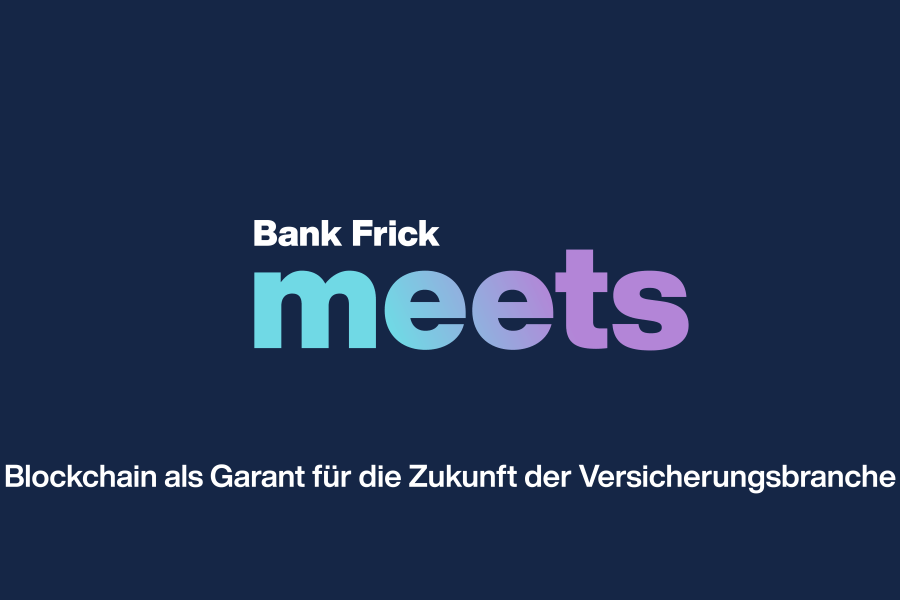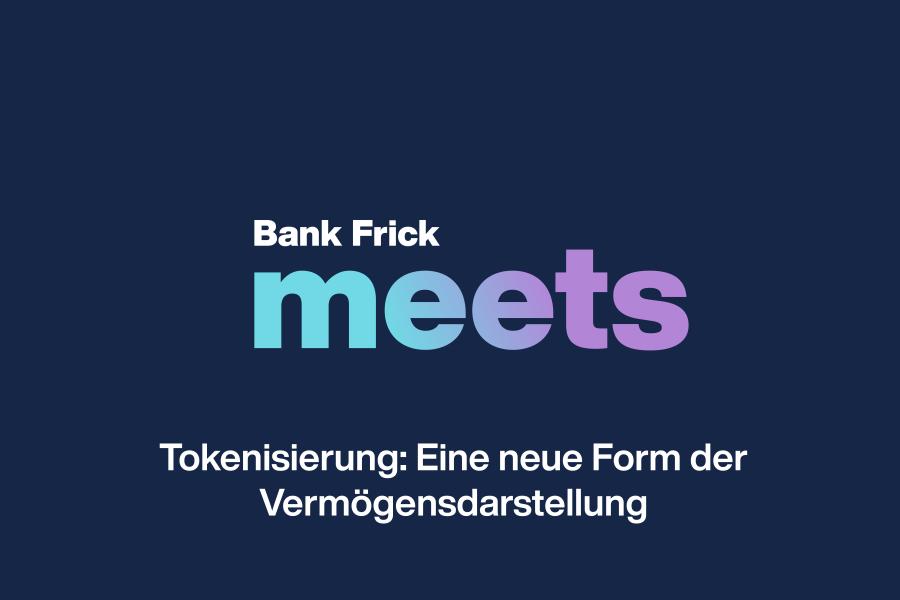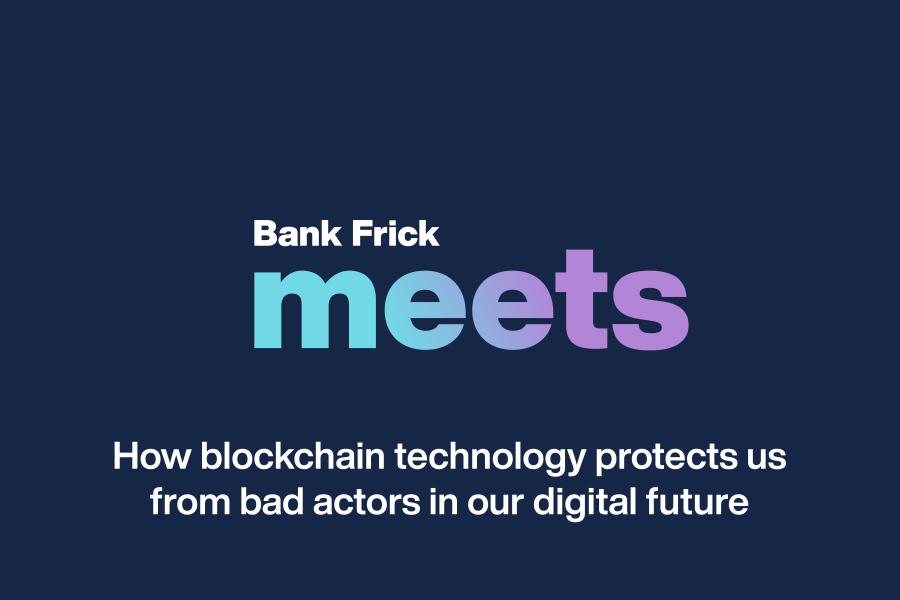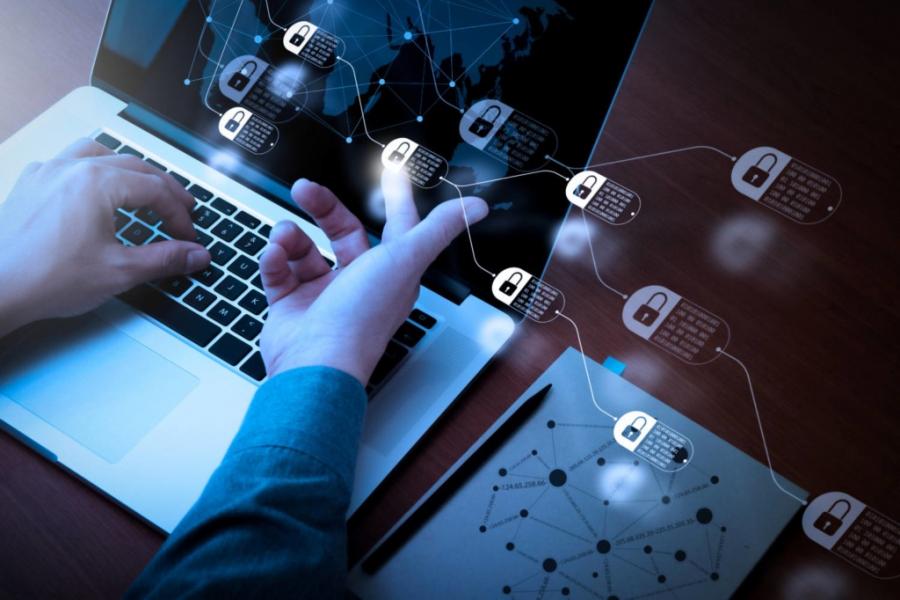Blockchain: A technology with social impact
Foundational technology is the most effective tool for impacting society at large and solving the challenges it is faced with. One such foundational institutional technology is the blockchain, which entered the picture through the discovery of Bitcoin in 2009 and has since proliferated and emerged in many different forms.
What does blockchain’s social impact look like?
Blockchain: A technology with social impact
The history of human society is one of cooperation through institutions. The institutionalisation of human cooperation has taken many forms – from tribes to guilds to enterprises and nation states. The latter are today’s dominant institutions, coordinating most human activity on this planet. As such, they have enabled what is considered the most advanced economy and society to date.
The natural course for these institutions has been to continuously centralise. Economics of scale, cost considerations, and the constant pursuit of efficiency have consolidated power and authority in the hands of effective yet centralised entities. And while the Internet has torn down some of the societal power structures, Internet users have gradually turned to a relatively small set of aggregating platforms, thereby reinforcing the overall centralisation tendencies. This has led to society becoming more centralised, something that is rather counterintuitive since the Internet’s main premise was decentralisation.
As a matter of fact, today’s most important domains – speech, governance and finances – are increasingly centralised. In all of these aspects, personal data or belongings are held with a centralised party, which creates rather adverse incentives. Thus users of these centralised institutions can fall prey to manipulation, corruption, exploitation or censorship, thereby leaving individuals vulnerable to different forms of abuse or malfunction: their data can be exploited, their privacy violated, their freedom of expression depressed, their votes manipulated or their funds locked.
Improving society is imperative
Be it the one billion people who do not have officially recognised documents to prove their identity, the millions of people who fall victim to privacy violations in financial and other data breaches, or the growing number of people who are being shadow banned, de-platformed, or restricted from expressing themselves freely, the calls for more social impact are growing ever louder.
Across the spectrum, institutions are increasingly encouraged to have a social impact with their actions. But what exactly does “having a social impact” really mean? And how can it be sustainably achieved? As it stands, more and more people consider having a social impact as a societal participant’s primary goal. In other words, everybody – be it individuals, businesses or governments – should be working towards the improvement of society by addressing pressing social challenges.
This obviously starts with identifying challenges and then raising awareness of this issue. Most importantly, having a social impact implies not only talking the talk, but also walking the walk by actively contributing to the betterment of the situation. The social impact is greatest when the social framework conditions are changed in such a sustainable way that the well-being of individuals or entire groups of people can be increased over the long term.
Why not use blockchain?
Foundational technology is the most effective tool for impacting society at large and solving the challenges it is faced with. One such foundational institutional technology is the blockchain, which entered the picture through the discovery of Bitcoin in 2009 and has since proliferated and emerged in many different forms.
First and foremost, it is so-called public blockchains that have risen to fame. Constructed as a peer-to-peer network of globally distributed computers (nodes), public blockchains allow for permissionless value transfer in a trust-minimised yet robust setting. Supplemented by the component of smart contracts – as in the case of Ethereum, for example – even the most complex kinds of information can be encoded and run as self-executing programs on a blockchain.
At their core, public blockchains have created a new trust layer that can be freely used by individuals, enterprises and governments alike. And, because of their core operating principles – such as decentralisation, transparency, self-verification, permissionlessness and accountability – public blockchains can play an essential role in furthering society’s cause of generating greater social impact.
The public blockchain’s model for decentralising and open-sourcing trust reduces information asymmetries between different non-trusting entities – be it among governments, enterprises or individuals themselves, as well as in between these different parties. By introducing a network for institutionalised trust provided by the means of cryptography and game theory, public blockchains offer an alternative that could break today’s increasing reliance on centralised entities that control access to information of all sorts. Consequently, the pressing peril of surveillance, censorship and human rights abuses could be successfully counteracted.
What does blockchain’s social impact look like?
As a new general-purpose technology, blockchain’s potential for social impact spans a wide spectrum and many different industries. It can disrupt different types of institutions and social systems across the globe. As a new framework for institutionalised trust, blockchains are giving rise to new economies and incentive systems that can fill in the gaps where traditional institutions fail to deliver. This way, the specialised need of marginalised populations and ethnic groups can be more effectively addressed.
Blockchain’s biggest impact so far has been regarding value. As a neutral technology, it has made value flow orders of magnitude faster and allowed value to flow more freely across international borders. While this value transfer function can be and is also misused for nefarious purposes, it can equally be used for achieving the good. Moreover, blockchains provide distinctive features – such as transparency or immutability – that can be leveraged to offset malicious intent when using such networks.
Beyond value, blockchain can also transfer effective control over personal data from today’s intermediaries to individuals. The latter would regain their privacy and more power to monetise their own data. While this comes with obvious benefits for individuals, it also means greater self-responsibility on their part.
Finally, blockchains can be used as a tool to create transformative shifts in how we control today’s vast amount of information. In an increasingly digital society, it becomes ever more important to safely store information – a task that a decentralised blockchain storage solution can credibly supply. As such, blockchain can also be a tool for democratisation because of its ability to create immutable records of information that cannot be altered, censored or suppressed by authoritarian regimes.
Designing blockchains the correct way
There is no denying it: blockchain is a powerful technology that has the potential to revolutionise traditional sectors and governments by making them more efficient and transparent. Hence the blockchain is likely to influence society and ethics, creating lasting intentional or unintentional effects on people’s lives. For this reason, it is important for developers and policymakers to care about blockchain design. There are several important aspects to consider when designing blockchains:
Governance:
Governance refers to the rules governing a blockchain, which are typically rigid. Developers should ask themselves questions, such as who creates the rules, how are they implemented and how is the system maintained. Overall, the goal should be to establish a sound governance structure when it comes to building blockchains for the social sector.
Identity:
Ethical issues arise regarding how personal identifying information associated with a blockchain is accessed. As a guiding principle, blockchains should aim to prevent the exposure of such data, especially when the activity is politically controversial. Also, developers must define identity, figure out who is granted identity and establish the different identities needed.
Verification and authentication:
Verification means determining the accuracy of the information entering a blockchain while authentication refers to validating and allowing this information to be recorded on the blockchain. Verification and authentication may be simple processes for digital assets, but when linking non-digital assets to people, legal, political and ethical issues may emerge that need to be carefully addressed.
Access:
Another important aspect is who has access to the blockchain. Project leads, developers and policymakers need to establish who has read and write permissions and if any conflicts of interest may arise from the users that obtain data access. While broad access is to be encouraged, this needs to be managed with care and potentially protective measures.
Data ownership:
Data ownership refers to who owns data and how users can use and benefit from this data.
Security:
This aspect means keeping the system safe from threats and helping blockchain users understand how to store their private keys safely. There should potentially be systems in place that help people deal with these new types of cryptographic assets.
Environmental impact:
Developers must consider whether the consensus algorithm they build for a blockchain demands high electrical energy consumption that could negatively affect the environment. In the pursuit of innovation and caring for our planet, blockchain consensus alternatives that also guarantee high security should be continuously researched.
Blockchain’s social impact in key areas
The social impact of blockchain technology is no longer a theoretical concept, but rather one that is already taking shape in the real world. Here are a few key areas where blockchain’s social impact is already emerging in practice:
Delivering permanent and portable identities
A fundamental use case that blockchain offers and that could potentially have an enormous social impact is in digital identity. Identification is key to any societal engagement – be it economic or cultural. Blockchains can help establish permanent and portable digital identities by offering a unified, durable and tamper-proof infrastructure that allows for secure management and storage. They can be linked to a unique individual, thereby providing the means to prove identity and credentials in a variety of societal contexts. This capability provides extensive social benefits. For instance, blockchain can make it possible to establish identities for the more than one billion people who have no identification papers. While they go unserved today, blockchain-based applications can improve their ability to access finance and banking services.
More generally, providing identification to people with no formal identity means they are no longer invisible to society, a fact that hitherto has made it difficult to effectively help them. With identification established through neutral database technology like blockchain, governments and other organisations can more potently combat and prevent human trafficking because children or women will no longer remain undocumented. This technology can also help prevent forced labour or facilitate the integration of refugees seeking asylum into society.
When it comes to refugees of any kind, they can also be helped more rapidly and efficiently using blockchain technology. Because blockchains represent truly decentralised systems with censorship resistance, they cannot be politically attacked or stopped through a single choke point. This provides a more secure, transparent and efficient option for sending aid to refugees in need. And, thanks to blockchain technology, donated funds can be tracked transparently. This stands in contrast to traditional humanitarian organisations, which are notoriously inefficient when it comes to donating funds and greatly lack transparency in terms of how funds are used.
Building new types of organisations
Blockchains provide an innovative and highly functional model for systems that transcend national borders and resist the influence of self-seeking actors. In times of humanitarian crises, when traditional organisations potentially hit roadblocks, decentralised, more agile technologies are just what is needed. The efficiency and flexibility of blockchain technology allow for organisations to be launched spontaneously as needed and receive support at a moment’s notice while providing total transparency.
Such organisations come in a new shape and form, commonly referred to as decentralised autonomous organisations (DAOs). They represent a new organisational structure to organise value creation among humans. Because they are built on blockchain technology, they are global in nature. This makes them a perfect fit for tackling challenges of a global scope and relevance, such as the United Nations’ Sustainable Development Goals.
Ultimately, such DAOs can serve as the new governance structures of the Internet age. They can help govern public blockchains that serve as new independent, neutral property rights systems. The property rights that blockchains have created might not be de jure, but they are de facto. As such, they can help make global property rights registration systems feasible, giving more people the ability to have valid property titles and thereby letting them participate in the world’s ongoing economic wealth creation.
While the potentially transformative power of blockchain is vast, much of this transformation will be achieved through the proliferation of practical applications of the technology. The possibilities of blockchain are already being explored across a wide spectrum of social impact initiatives, organisations and applications.
Fostering equality and diversity
One of the most pressing issues of our time, acknowledged by many, is the fact that across the globe we struggle to provide equal opportunities for everyone. This is where blockchain-based projects strive to provide a solution as well. For example, there are women-focused DAOs that comprise “self-identifying women, trans women and non-binary audiences”. Such projects aim to build products that increase equity and generate revenue for everyone. They also promote inclusion by implementing their goals through hacker houses, community meetups, hackathons and conference participation. NFT drops and programs like that of the Minority Programmers are used to raise the necessary funds to bring more developers of any gender or sexual orientation into the Web3 space.
Curing cancer and funding research
Blockchain technology is also impacting the field of medicine through biotech DAOs, a subcategory of decentralised science (DeSci). These decentralised, autonomous organisations bring people together to solve problems using biotechnology. They enable scientists to trade skills and access lab equipment or focus on funding expensive lab research.
Blockchain technology is being used for cancer research as indicated by a Nature Medicine research paper. The researchers have been using Ethereum smart contracts to update their AI models. These AI models are used to anticipate the development of cancerous cells in the body. Their blockchain-powered system, a type of swarm learning, also allows various researchers to update their AI models at the same time on three separate computers without an intermediary.
This proves that blockchain technology can be used to share large amounts of biological research data between computers located in different parts of the world. This is crucial when it comes to life-threatening diseases like cancer. Moreover, blockchain-based medical research enables the advancement of machine learning in biology since models can be trained on a wide range of datasets leading to more information and eliminating batch effects (non-biological factors that change the data of an experiment).
Saving the planet
Considering the ongoing effects of climate change on our planet, blockchain technology is playing an important role in helping save our planet through community- and purpose-driven DAOs. Through such online organisations, a global community of people dedicated to doing good can raise funds to combat climate change.
To use such a platform, one simply needs to look for a community that supports one’s cause. This could be climate change or medical research. Next, one swaps a specific token for the respective DAO’s governance token, thereby voting for the project that should receive funding. Other initiatives include blockchain-based Climate Collectives, which aim to tokenise rainforests and other assets that reduce the amount of carbon in the atmosphere. This will help preserve trees and minimise the effects of climate change. Yet another DAO solution is tackling problems around global warming by building out a carbon-backed token and real-time carbon offset solution that will help people and companies more easily achieve climate positivity.
Mass adoption means mass social impact
Blockchain’s social impact has only just begun to unfold. As with any other technology, development and impact happen in stages. Initially, hardly anyone cares about a new technological breakthrough as its potential is widely unknown. Once knowledge about its potential trickles through society, more and more people become excited about the technology’s possibilities.
This is the time when speculation runs rampant. And this is the stage that blockchain technology is only just growing out of. It is now entering a phase in which real use cases are established that will have a real impact on society at large. The more established these use cases become, the greater the felt impact will be. It seems safe to say that blockchain’s social impact component will certainly gain in importance in the coming years. And, once mass adoption is reached, blockchain, with all its benefits, will be an integral part of our lives and our society, and will have improved them in many ways.

Bank Frick meets
Auf Bank Frick meets teilen wir unser Wissen zu verschiedenen Themen: von der Blockchain-Technologie über praxisnahe Best-Case-Beispiele bis hin zu Updates aus der klassischen Finanzwelt.
Share post


Auch interessant

Vom Code zur Wirkung: Mit Blockchain zu mehr Transparenz und Effizienz
Die Blockchain-Technologie, bekannt geworden durch Laszlo Hanyecz' berühmten Pizzakauf 2010, hat sich weit über digitale Währungen hinaus entwickelt. Mit ihren Eigenschaften – Dezentralisierung, Transparenz und Unveränderbarkeit – ermöglicht sie effiziente und sichere Transaktionen ohne Mittelsmänner. Besonders Smart Contracts haben die Einsatzmöglichkeiten der Blockchain erweitert, etwa in Bereichen wie Lieferketten, Automatisierung und grenzüberschreitende Zahlungen.
Kritiker äußern Bedenken hinsichtlich Energieverbrauch und Komplexität, doch moderne Blockchains sind energieeffizienter geworden und durch benutzerfreundliche Schnittstellen leichter zugänglich. Im Non-Profit-Sektor bietet Blockchain großes Potenzial: Spenden können transparent, kostengünstig und nachvollziehbar vom Spender direkt zum Empfänger übertragen werden, wodurch Effizienz und Wirkungsnachweis deutlich verbessert werden. Die Technologie markiert somit den Beginn einer neuen Ära von Vertrauen und Zusammenarbeit.

Einblicke in den Prozess der Gestaltung von AMCs
Actively Managed Certificates (AMCs) haben sich zu einem bedeutenden Bestandteil des europäischen Finanzmarktes entwickelt. Als strukturierte Produkte, rechtlich als Schuldverschreibungen klassifiziert, bergen sie für den Investor ein entsprechendes Gegenparteienrisiko, vergleichbar mit anderen strukturierten Finanzprodukten. AMCs werden in Form von Wertpapieren verbrieft, die den jeweiligen Inhaber das Recht auf Geldrückzahlung oder Lieferung eines Basiswertes geben. Durch den Erwerb wird der Investor somit zum Gläubiger des Emittenten und begibt sich in eine Abhängigkeit im Hinblick auf die Art und Höhe der Rückzahlung, die von verschiedenen Parametern abhängig ist.

Direct Market Access – Effiziente Handelsabwicklung für Fondsstrategien
Liechtenstein verfügt über eine langjährige Tradition in den Bereichen Banking und Asset-Management. Seit dem EWR-Beitritt im Jahr 1995 hat sich der liechtensteinische Finanzplatz sukzessive als fachkundige Anlaufstelle für Promotoren von kollektiven Anlagestrukturen auf dem europäischen Finanzmarkt etabliert.

Blockchain als Garant für die Zukunft der Versicherungsbranche
Der Versicherungsmarkt ist ein wesentlicher Bestandteil der Weltwirtschaft und deckt sowohl persönliche als auch geschäftliche Risiken ab. Es ist daher nicht verwunderlich, dass es sich um eine der grössten Branchen der Welt handelt, die einen geschätzten Wert von etwa 5 Billionen US-Dollar aufweist und rund 2,7 Millionen Menschen auf der ganzen Welt beschäftigt. Von den 5 Billionen US-Dollar entfallen rund 3,7 Billionen US-Dollar auf den weltweiten Lebensversicherungsmarkt, während der Wert des Schaden- und Unfallversicherungsmarktes bei 1,3 Billionen US-Dollar liegt.

Tokenisierung: Eine neue Form der Vermögensdarstellung
Seit Anbeginn der Zeit haben die Menschen gejagt und gesammelt und sich das, was sie fanden, zu eigen gemacht. Dies ist die Zeit, in der das Konzept der besitzfähigen Vermögenswerte zum ersten Mal auftaucht, wenn auch nur in rudimentärer Form. Seitdem haben sich die Vermögenswerte weiterentwickelt und sind komplexer geworden, weil die Menschen zuverlässigere Wege gefunden haben, Vermögenswerte mit Menschen zu verbinden. Heutzutage schliessen Menschen bei der Übertragung von Vermögenswerten Verträge ab.

Blockchain - mehr als nur Kryptowährungen
Ob in der Cyber-Security, im Supply-Chain-Management, bei neuen Asset-Klassen oder bei Versicherungslösungen: Die Blockchain-Technologie kommt in immer mehr Bereichen der digitalen und der realen Wirtschaft zum Einsatz. Die Grenzen zwischen klassischer Bankenwelt und Blockchain-Banking werden fliessender.

Wie uns Blockchain-Technologie in der digitalen Zukunft vor Angriffen schützt
Die Blockchain-Industrie verzeichnet seit einigen Jahren ein signifikantes Wachstum. Krypto-Start-ups schiessen aus dem Erdboden, und eines nach dem anderen scheint sich als «Einhorn» zu erweisen. In unserer neuen Reihe werden wir diese Technologie in Blogposts und Webinaren genauer unter die Lupe nehmen und erörtern, weshalb sie so erfolgreich ist und überall im Zentrum des Interesses steht. Dabei werden wir uns weniger mit dem spekulativen Aspekt befassen, mit dem die Blockchain häufig in Verbindung gebracht wird, sondern vielmehr untersuchen, inwiefern sie reale Probleme lösen kann.

Wie klassische Finanzintermediäre in der Krypto- und Blockchain-Welt Fuss fassen können
Mit zunehmender Selbstverständlichkeit fragen immer mehr Kunden nach Dienstleistungen rund um Kryptowährungen. Für Finanzintermediäre eröffnet diese Nachfrage neue Geschäftsmöglichkeiten. Um das Potenzial heben zu können, müssen die Akteure aber auch das Spezialwissen zur Verfügung haben.

Blockchain technology reinvents correspondent banking – just not yet
As one of its major use cases, blockchain technology is said to transform traditional correspondent banking. So far major challenges have pushed back this transformation. It is more likely than ever that with central bank digital currencies on the horizon; blockchain disruption will finally come to fruition in the realm of cross-border banking.

Turning crypto investment into an earning asset
With Ethereum upgrading to Proof of Stake, the crypto world is going through one of its most transformative shifts to date. This means that customers will soon be able to earn interest on their digital asset holdings through a process called staking. What staking is, how it will define the future of Ethereum and digital asset custody at large is explained in this article.